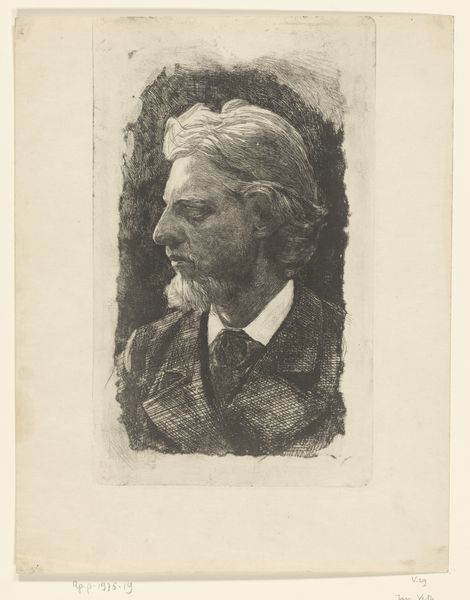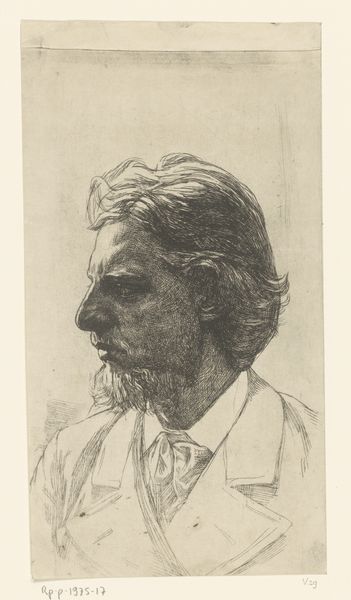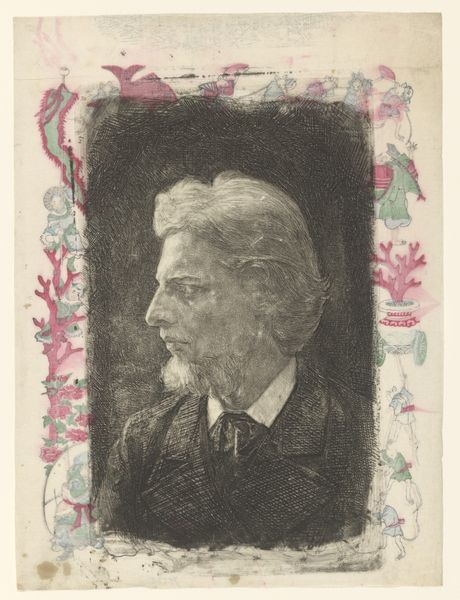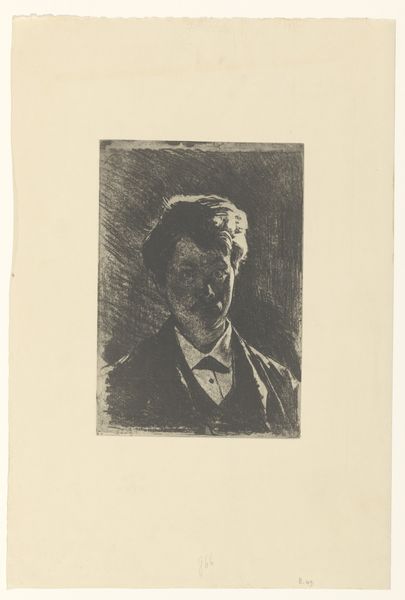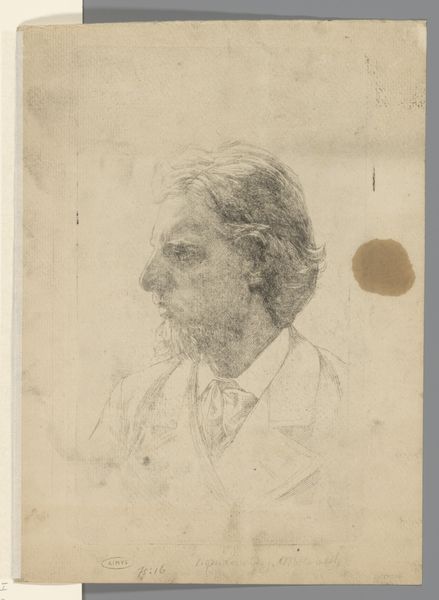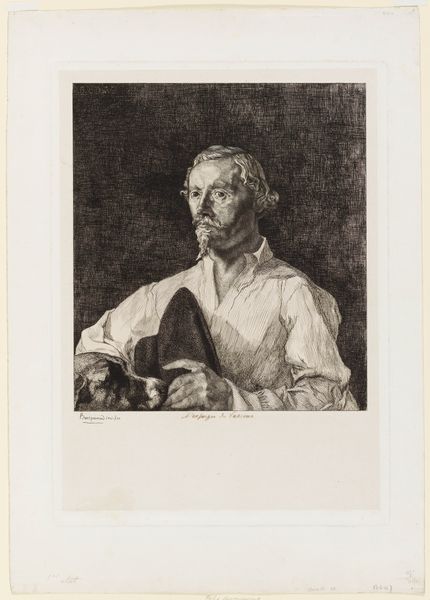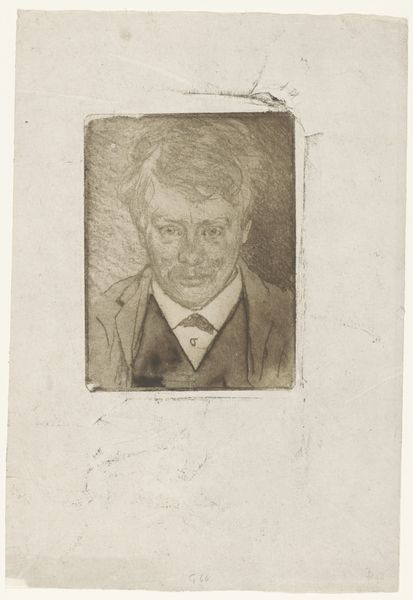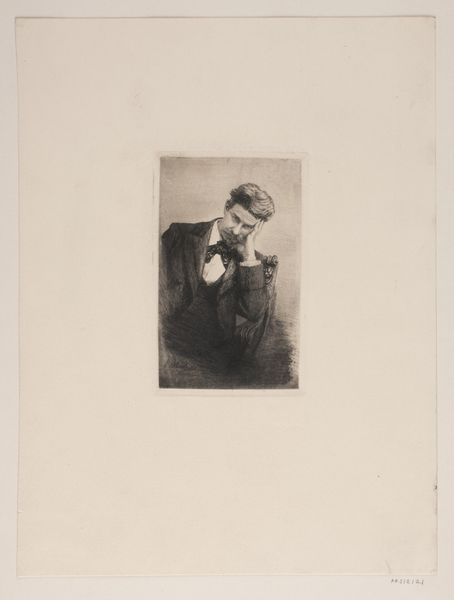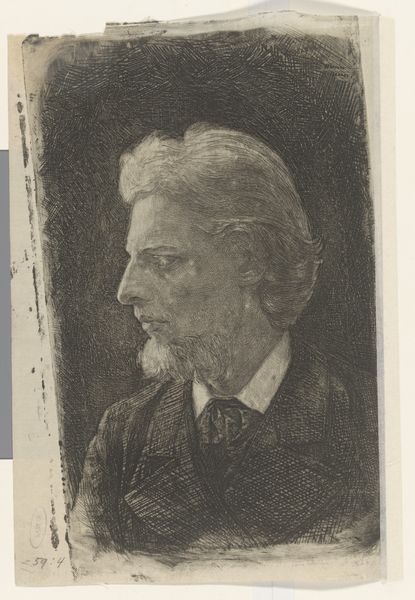
drawing, pencil
#
portrait
#
drawing
#
dutch-golden-age
#
pencil drawing
#
pencil
#
realism
Dimensions: height 273 mm, width 162 mm
Copyright: Rijks Museum: Open Domain
Jan Veth rendered this portrait of Jacques Perk using etching, a printmaking technique, in which a metal plate is coated with a waxy resist, and then scratched into with a needle. The plate is then submerged in acid, which bites into the exposed lines. Veth’s skill is evident in the detailed cross-hatching, creating tonal variation and capturing the texture of Perk's hair and clothing. The etched lines define the form, while the varying depths suggest light and shadow, lending a sense of depth to the image. The social context of printmaking is also relevant here. Unlike painting or sculpture, etching allowed for the production of multiple images, making art more accessible. Veth's choice of etching democratized the image of Jacques Perk, allowing his likeness to circulate more widely. This reflects a shift towards broader dissemination of culture, challenging traditional notions of art as a unique commodity. Ultimately, Veth's portrait reminds us that the meaning of an artwork is not only found in its subject matter, but also in the materials, methods, and social context of its making.
Comments
No comments
Be the first to comment and join the conversation on the ultimate creative platform.
